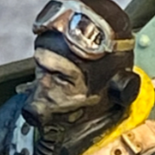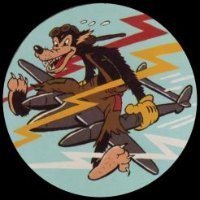-
Posts
4,720 -
Joined
-
Last visited
-
Days Won
15
Radub last won the day on November 19 2022
Radub had the most liked content!
About Radub
- Birthday 12/17/1971
Profile Information
-
Gender
Male
-
Location
West Cork, Ireland
Recent Profile Visitors
-
 Pete Hamann reacted to a post in a topic:
Takom Wings 1/32 Ho 229A & B
Pete Hamann reacted to a post in a topic:
Takom Wings 1/32 Ho 229A & B
-
 Martinnfb reacted to a post in a topic:
Takom Wings 1/32 Ho 229A & B
Martinnfb reacted to a post in a topic:
Takom Wings 1/32 Ho 229A & B
-
 Gary Needham reacted to a post in a topic:
Takom Wings 1/32 Ho 229A & B
Gary Needham reacted to a post in a topic:
Takom Wings 1/32 Ho 229A & B
-
 Bob MDC reacted to a post in a topic:
Takom Wings 1/32 Ho 229A & B
Bob MDC reacted to a post in a topic:
Takom Wings 1/32 Ho 229A & B
-
 firefly7 reacted to a post in a topic:
Takom Wings 1/32 Ho 229A & B
firefly7 reacted to a post in a topic:
Takom Wings 1/32 Ho 229A & B
-
 mark williams reacted to a post in a topic:
Takom Wings 1/32 Ho 229A & B
mark williams reacted to a post in a topic:
Takom Wings 1/32 Ho 229A & B
-
 CRAZY IVAN5 reacted to a post in a topic:
Takom Wings 1/32 Ho 229A & B
CRAZY IVAN5 reacted to a post in a topic:
Takom Wings 1/32 Ho 229A & B
-
One thing to keep in mind is that the two-seat version of the Horten IX is totally fictional. It never existed. We simply do not know what a two-seat Horten would have looked like, had it made it past the drawing board. Literally, this is as imaginary as the type of hyperdrive used on the Millennium Falcon. The only known drawing of the two-seat Horten IX was drawn by Horten. It is very basic. This was the basis of the Dragon 1/48 kit and ZM 1/32 kit. By the way, the intakes are exactly where the Horten brothers put them in their own drawing. The single-seat V6 gets mentioned a lot as a basis of the two-seater. The existing drawings of the redesigned single -seat V6 were drawn by Gotha when they took over production. We do not know what a Gotha-redesigned two-seat aircraft would have looked like. No such drawings, if they existed, were ever found. There are a lot of suppositions and flights of imagination. Nothing wrong with that. But it would be silly to argue that "my supposition is better than your supposition". Radu
-
 KUROK reacted to a post in a topic:
Vinyl vs tape masks
KUROK reacted to a post in a topic:
Vinyl vs tape masks
-
 chukw reacted to a post in a topic:
Kotare 109 K-4 update. Second test shots are in hand and looking good!
chukw reacted to a post in a topic:
Kotare 109 K-4 update. Second test shots are in hand and looking good!
-
 D.B. Andrus reacted to a post in a topic:
Kotare 109 K-4 update. Second test shots are in hand and looking good!
D.B. Andrus reacted to a post in a topic:
Kotare 109 K-4 update. Second test shots are in hand and looking good!
-

Kotare 109 K-4 update. Second test shots are in hand and looking good!
Radub replied to Mark Robson's topic in LSP Discussion
That is a G-10. Not all fairings were made of wood. Radu -

Kotare 109 K-4 update. Second test shots are in hand and looking good!
Radub replied to Mark Robson's topic in LSP Discussion
The tail wheel doors were spring-loaded in the open position. Between the doors was a sprung “scissor” mechanism, hinged to each door. When the tail wheel strut retracted it struck the scissor mechanism, pulled it, and that also pulled the doors closed. So, when on the ground, the doors were open. However, on some aircraft the undercarriage leg was locked in the open position (I.e. not retractable anymore) and the doors were wired in the closed position. There were a number of 109 K that had the “standard” short tail undercarriage as used on the Bf 109 G. These aircraft had no tail wheel doors, as this undercarriage was not retractable. Check photos for each subject. Hth Radu -

Kotare 109 K-4 update. Second test shots are in hand and looking good!
Radub replied to Mark Robson's topic in LSP Discussion
I was just pretending to be an "eternally dissatisfied" punter. I was going to disagree with anything you said and see how far we could go, but to be honest this takes a skill set that I just do not possess. People demand "never kitted before" stuff". Here are "never kitted before" decals. The reaction is "No, not this, I meant the other stuff that was never kitted before". I am sure that aftermarket people are already working on alternatives. Radu -

Kotare 109 K-4 update. Second test shots are in hand and looking good!
Radub replied to Mark Robson's topic in LSP Discussion
Why JG77 or JG4? Radu -

Kotare 109 K-4 update. Second test shots are in hand and looking good!
Radub replied to Mark Robson's topic in LSP Discussion
Such as? Give me an example. Radu -

Kotare 109 K-4 update. Second test shots are in hand and looking good!
Radub replied to Mark Robson's topic in LSP Discussion
The only thing that makes it "American" are the stars and bars that were painted over the German crosses. The German crosses are on the sheet. Some sources claim that this aicraft wore "yellow 5" when it was in German marlkings. "Yellow 5" is included on the sheet. Do not use stars. Use crosses. Add "yellow 5" from the sheet. Voila! German "original scheme". Radu -
The seat backrest should have the raised triangle area. The purpiose of the raised triangular area was to clear the two attachment loops for the seatbelts - wothout it the attachment loops would be chafing against the pilot's back and parachute harness. This triangular raised area was part of a thin metal sheet "back rest" that was bolted on top of the angled rear bulkhead of the cockpit. The photo pposted by Mike shows the angled rear bulkhead without the back rest in place. The other photos show the area with the back rest in place. You can see more photos of the thin metal back rest here: http://arsenal45-shop.de/product_info.php?info=p857_----rueckenblech-zum-fuehrersitz---messerschmitt-bf109-g-k----.html HTH Radu
-
The ZM forthcoming model is based on an official Horten drawing dated 9 February 1945. It does not specify any V-number. This is the same drawing that was used by Dragon for their 1/48 kit. It is an official Horten design and it is not linked to the Gotha-designed V6. I spoke to Arthur very many times about the V6 single-seat day-fighter. He has a lot of info about it. His drawings of this V6 were published in the Classic Publications book and one can immediately see that it is significantly different from the V3 (the aicraft preserved at the NASM), nothing between the wings is the same. However, the V6 did not exist beyond the drawing board and even so the very few official drawings that still survive indicate that it changed many times. Radu
-
Have a look at this video from the IPMS USA nationals in Madison. Go to the 38.49 mark. This is what pvanroy was talking about. I showed this to BigTimm when we met there (at the 38.05 mark you can see my back in the red shirt). Radu
-
There are a lot of things to unpack here. First of all, this is just the opinion of one person based on his own distinct preferences. By his own admission, and, indeed, as pointed out in the title of the video, this modeller likes to build models "in flight" and his main complaints are about the "lack of crew", "lack of wheels-up option" and "lack of stand". When you boil it down to its essence, his complaint is that "the current models do not allow me (or make it too hard) to build models in-flight on a stand." There is nothing wrong with that choice, in fact I really appreciate in-flight models, I built a few and plan to build more in the future, but when you watch the video, keep that in mind. Having said that, he has a point that the new models are increasingly complex. But that is what the customers ask for! Some customers demand complex models while some other customers demand simpler models. If you please one, you annoy the other. How do manufacturers deal with this? Because of many factors, the tendency is towards more complex models. Let me explain how some manufacturing decisions are made, which are all based on modeller feedback: - "This is not the version I wanted, I wanted precisely the version you did not make." Because of that, the manufacturer will have to plan ahead for future versions. Tooling is expensive, it is prohibitively expensive to make new moulds for every version, so manufacturers make multi-version moulds. This inevitably leads to many splits on many parts to allow for different variations and changes. This can vary from parts for different hatches, parts for different airframe components to account for differences in engines, undercarriages, wings or fuselages, etc. This can result in models with "patchwork quilt" sections. It is not ideal, but it is the only way to account for the demand from the customers for the "other version". - "This detail will not be visible, why make it? What is the point of all those spars, bulkheads, etc.?" Many models, especially large models, need to be reinforced in order to prevent warping and, with time, splitting at glue joints under their own weight. Even smaller models suffer. I have some bomber models I built in the early-nineties, an Airfix He 177 and a Heller He 111 come to mind , that developed splits along the wing/fuselage glue joints over time and on the He 177 the fuselage also split across the spine. I am sure many of you had the same problem. Some may say "I have a model I built when my granny was a toddler and it is still fine". Congratulations! Others are not as lucky. Plastic has weight and gravity works over long periods. Good models require spars, bulkheads, etc to make them last on the shelf. So, if you are making all of these parts anyway, why not do it with a little "panache"? Add some detail to the bulkheads even if you see a fraction of it. Make the spars a little more complex, even if you only see a fraction of them. With spark erosion used in modern tooling, the costs of adding some extra detail to parts is minimal. The mould will still need to be carved for that part anyway, at pretty much the same cost whether the part is plain or detailed, so why not make it detailed? - "Why is 'Manufacturer X' making a complex model when 'Manufacturer Y' already made the same model with fewer parts and cheaper years ago?". BTW, if "Manufacturer Y" makes the model you need the way you need at the price you need, then buy that one, problem solved. Why are new models increasingly complex? Here is why: "Out of the box" [OOB] competition class, which is increasingly popular. In fact, this aspect of the hobby is possibly one of the leading reasons for the increase in the complexity of modern models. There is an increased demand from competitors who want models that are complex and striking straight out of the box. Your model has to be different from all the other models on the competition table in order to get the points. The current competition rules state that OOB models have to be "single media", i.e. all plastic, or all resin, or all photo-etch, no mix of them. So, manufacturers make such complex plastic (single media) models for people who want to gain a little "edge". Things that were previously done in resin and sold as aftermarket, are now in plastic and in the box. This is the same as anything else in our lives. You can get "consumer" and "pro" versions for everything, whether they are sports equipment, cooking equipment, music equipment, cars, bikes, camping, fishing, any tools, computers, you name it. Even in the video in the OP, the modeller showed a Hasegawa model that he liked and an Airfix model that he did not like that much. Unfortunately, in a competition, even if both models are built to very high standards, the Airfix model may get more points by the sheer fact that it was more complex. However, some may say "I am not competing, I am building for myself". As already mentioned above and richly-illustrated in the OP video, various manufacturers already cater for various tastes, so take your pick. - "Too many parts push up the price". No, they don't! Here is why: The price at the factory door is actually a fraction of what you pay at the checkout. I can tell you from personal experience that Tamiya kits are a lot cheaper in Japan than in Europe and, conversely, Airfix or Revell kits cost a lot more in Japan than in Europe. The biggest contributor to the price you pay are the distance travelled and taxes. Every single time a kit changes hands, from the factory door, to the shipping container (and shipping and containers costs have shot up vertiginously in the last few years), to the truck(s) (and the prices of fuels and salaries have shot up vertiginously in the last few years), to the dealer/distributor, to the model shop shelf, every single entity that comes in contact with that product adds a little fee. Then, finally, your shop, whether on line or on the street, purchases that already cost-laden model from a distributor/dealer and add between 50% to 30% to it. This markup is going towards their own costs (salaries, rent, utilities, insurance, storage, etc) and some profit to be used towards future restock purchases in order to keep the shop going. On top of that, they need to add sales tax. In Ireland where I live the VAT is 23%, which makes every model even more expensive than elsewhere for a reason that has nothing to do with the manufacturer. So, take a model that costs €100 to you, take off the tax, take off the seller's markup, take off the dealer's and the shipper's markups (these may be multiple) and you will discover that in fact the manufacturer may get as little as €20 or less at the factory door. So, let me assure you that even if the manufacturer were to simplify the model, they may reduce their cost at the factory door by €5 or €10, but all the other costs that incur once the model leaves the factory will remain the same. So, instead of costing €100, your simpler model will cost €100 minus the €5 or €10 that the manufacturer saved. This is not much of a saving, and for that you still get a relatively expensive model that is now less detailed. Some may say, that "Manufacturer X" sells their kit at their own factory door for €100 without any of the other downstream markups. All manufacturers need to also sell through distributors/dealers, who, for reasons out of their control as described before, are forced to sell he model for €100. The dealers and retailers would be quite upset if the manufacturer undercut them and may even boycott the manufacturers, so everyone that sells the kit has to sell the kit at a similar price. In any case, why begrudge the people who actually do all the hard work for your hobby? Giving some support to the manufacturer by buying directly can only help the manufacturer's budget and that will keep them in business long enough to give you more models. - Lego! You think our models are expensive and have too many parts? Anyway, this is just my opinion, based on my experience of sitting in production meetings over more than a decade. Radu
-

When will the standard edition of ZM's Fw 190 hit dealer shelves?
Radub replied to RBrown's topic in LSP Discussion
I will try to be clearer. The “schedule” listed in that poster is no longer valid. Please disregard everything in that poster, and follow the announcements from Zoukei Mura. There will be more exciting kits in the future. I was a member of the team that developed this model. Radu -

When will the standard edition of ZM's Fw 190 hit dealer shelves?
Radub replied to RBrown's topic in LSP Discussion
"Reality"... hmmm... Remember that for the last decade there have been a lot of rumours about the ZM FW 190. Some were true, many were not. For example, take the "announcements" that "someone in the know" said that "the whole project was shelved"? The "reality" was often different. For the actual "reality", please follow the direct announcements from ZM. There will be many exciting things in the future, stay tuned. Radu -

When will the standard edition of ZM's Fw 190 hit dealer shelves?
Radub replied to RBrown's topic in LSP Discussion
That poster is eight years old. A lot has changed since then. I would not treat it as some kind of covenant or binding contract - as most advertisements say in small text at the bottom, “details subject to change”. For the best up-to-date information please read the ZM announcements on the ZM channels, such as their website or social media. “Limited edition” means a kit made in a limited quantity, available until sold out. “Special edition” means a kit that has something different, such as decal or figure, which is also available until sold out. All I can tell you is that if you like a ZM subject, get it when you see it, the kits sell out really fast. At the Madison show, most of the queries made to the ZM staff at their stand were about sold out kits. Radu -
The crosses are too far forward. You mentioned a guide created by me, but please have another look at it. Please check the position of the crosses against the ammunition access doors: the inboard spanwise "chevron" of the "M" should be very close to the hinge of the first door. On your model that "chevron" is far from that hinge. Please note that the same diagram that you mentioned was supplied to Azur/Special Hobby and they included it in the kit. You can see it here: https://www.scalemates.com/products/img/3/4/3/1121343-41-instructions.pdf I hope this helps. Radu










